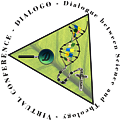Modeling Religious Coexistence: The Turkish and Tatar Muslim Communities in Romania’s Dobruja
Modeling Religious Coexistence: The Turkish and Tatar Muslim Communities in Romania’s Dobruja
Author(s): Raymond HorchosSubject(s): Theology and Religion, Islam studies, Comparative Studies of Religion, History of Islam, History of Religion
Published by: EDIS- Publishing Institution of the University of Zilina
Keywords: freedom of religion; religious pluralism; inter-religious dialogue; Islam; Christianity;
Summary/Abstract: The peaceful coexistence of different religions is crucial today, especially with the ongoing conflicts in Ukraine and the Levant and the arrival of new refugees and immigrants with diverse faith traditions. In Romania, while immigrants may face challenges integrating into the predominantly Romanian Orthodox religious majority, the Dobrogean Model of Religious Pluralism is a pattern of inter-religious coexistence with the potential to clarify the critical factors needed to facilitate peaceful pluralism among religious groups. Utilizing Rogers Brubaker’s triadic-nexus configuration of national minorities, nationalizing states, and external national homelands alongside various qualitative methods, this paper will investigate the historical and institutional elements for promoting peaceful coexistence, particularly with an eye toward the Islamic minority in the Dobruja region. The study will also examine the crucial role of state and affiliated institutions in promoting tolerance and coexistence by protecting freedom of religion. Romania's location at the crossroads of the East and West and the Dobruja region's reputation as a model of religious pluralism makes it an excellent case study for identifying critical factors for the peaceful coexistence of religions in contemporary societies.
Journal: Dialogo
- Issue Year: 10/2024
- Issue No: 2
- Page Range: 169-188
- Page Count: 20
- Language: English

